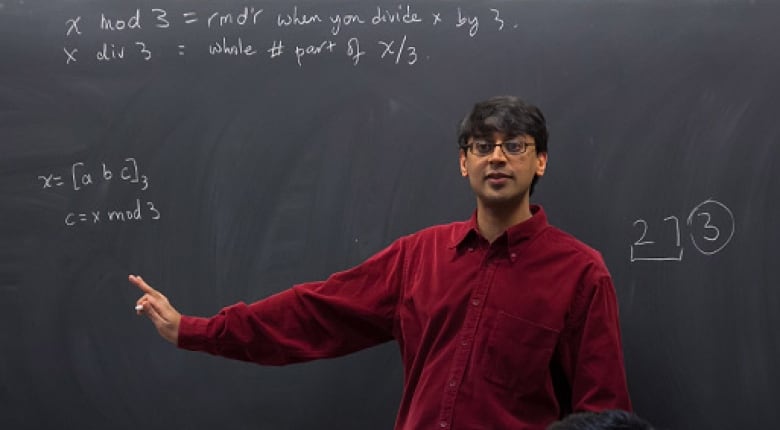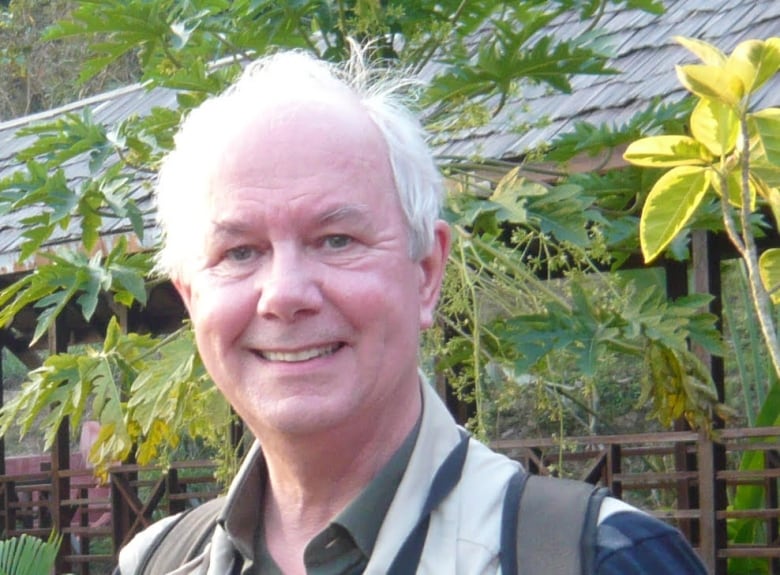The story of zero: How 'nothing' changed the world
'We often take it for granted. But it's one of the greatest inventions of all time,' says mathematician

*This is the first episode in our series, The Greatest Numbers of All Time. Listen to more episodes.

For a number that represents nothing at all, zero is everywhere.
The universe itself is believed to have begun from zero. It's at the bottom of the countdown, the middle of the number line, and at the top of the clock.
If you empty your chequing account at the bank, zero is — regrettably — a depressing reality. Yet you'll find it on every blank page and inside every unused pocket.
By opening the door to negative numbers and numerical abstraction, zero has unlocked entire fields of mathematics — from algebra to calculus and beyond. As a key element of the binary code that modern computing is built upon (0 and 1), it's essential to many of the gadgets that keep our lives running smoothly.
And yet for thousands of years, humanity had no concept of zero. Before it could be used, it had to be invented.
"This invention of the zero and the way we write our numerals today is what is now the basis of all modern technology," Princeton mathematics professor Manjul Bhargava told IDEAS.
"We often take it for granted. But it's one of the greatest inventions of all time, really."
The origins of zero
The earliest known representation of the number zero has been traced to approximately 300 B.C., when the Sumerian civilization of what's now Iraq used it as a placeholder.
For the Sumerians, zero was little more than a handy notation tool that made it possible to write larger numbers with greater clarity and efficiency. It was represented by a slanted double-wedge symbol, pressed into clay tablets.
According to mathematician Charles Seife, author of Zero: The Biography of a Dangerous Idea, even that simple placeholder zero was a remarkable tool for the Sumerians — because it made it possible to easily record large sums.
"With a place value number system, you can keep adding zeroes … and growing your numbers system," said Seife. "You don't run into an end because you're never having to invent new symbols… You might run out of paper. But the concept is still there."

Over time, Seife says, zero's role as a placeholder allowed mathematicians to write "unfathomably large" numbers — pointing all the way to infinity.
But for the ancient Greeks, who borrowed the Sumerian zero for their astronomical calculations, the number was dangerously subversive.
Aristotle was fundamentally opposed to the notion of the void. His theory of physics was predicated instead on the existence of a "prime mover" — which came to be closely associated with the Christian conceptualization of God.
For early Christians, the very existence of God relied necessarily on a refutation of any absolute void – and zero had no place in the church's cosmology.
"Greek philosophy, and by extension early Christian philosophy, more or less rejected the idea of nothing," said Seife. "It was dismissed."
Zero, infinity and everything in between
Zero ultimately took hundreds of years to evolve from a placeholder into a full-fledged number in its own right — one that could be used in complex calculations.
That development is credited to the ancient Indian mathematician Brahmagupta, who developed a system of rules for calculations involving zero in the year 628 A.D.
"He introduced the zero as a number and gave all the rules for arithmetic of zero," said Bhargava. "But then he said, 'Well, what about if I take zero minus one? What happens there?'"

Bhargava adds that Brahmagupta's book is the first place where negative numbers were introduced.
"So that's the sense in which zero kind of opened the floodgate of lots of other numbers."
According to Sarah Hart, a professor of mathematics at the University of London, and professor of geometry at Gresham College, Brahmagupta's work paved the way for modern mathematics, opening the door to branches like algebra and calculus.
"What it set the scene for was abstraction — was taking mathematics to a higher level."
Yet hundreds of years after Brahmagupta first incorporated it into his calculations, the number zero continues to confound us.
"It's got these strange properties," said Hart. "It's the kind of the naughty child in the corner, because it doesn't behave itself. When you try to do these very simple arithmetical operations with zero, it sometimes goes badly wrong."
To get a sense of just how wrong things can go, pull out your calculator and try dividing any number by zero. [Spoiler alert: You'll get an error message.]
It's an age-old puzzle — one that mathematicians like Hart are very familiar with.

"If we divide [the number] one by a small, tiny fraction, the outcome will be bigger than one. And you can keep doing this and going dividing by smaller and smaller, smaller things."
"So you could say, well, maybe one divided by zero is infinity, maybe that's the answer. But then you have to get into, well, what's infinity then?"
Understanding 'absolute zero'
Embracing the confounding paradoxes of zero has ultimately allowed mathematicians to harness its power.
Thanks to calculus, we've managed to wrangle some remarkable technologies out of nothing — from satellites to space travel.
But zero has other, even stranger, properties that we have yet to master — particularly when it comes to gauging temperature.
On a Celsius thermometer, the number zero rests midway down the number line. But the true 'zero point' of temperature, commonly known as 'absolute zero,' is a staggering -273 degrees.
Absolute zero, like so much of "the void", remains tantalizingly out of reach for humanity. As Stewart explains, the laws of thermodynamics simply won't allow us to get there.

"If you have a system which is in its zero energy state, it has to be totally out of contact with the rest of the universe," said Stewart. "Otherwise, a little bit of vibrations, a little bit of energy will leak into it."
But in trying to get as close to absolute zero as possible, physicists have made yet another potentially groundbreaking discovery.
"Materials at very, very low temperatures become superconducting," explained Stewart. "They can conduct electricity with no resistance."
Earlier this year, a team of South Korean scientists set the world abuzz when they claimed to have found a room-temperature superconductor, a discovery that would have revolutionized energy efficiency.
That particular advancement hasn't arrived yet. But the search continues — another reminder of the hidden potential that may still be lurking inside zero's void.

"There have been a lot of efforts to find materials that will [be] superconducting at higher temperatures," said Stewart.
"I think what we're seeing here is that the quest for zero, even if you can't get there, still turns up lots of interesting things."
As that quest marches ever onward, one thing is clear to Bhargava: humanity owes a massive amount to humble-looking zero.
"Zero, once it's made its way into mathematics, it really changed the world."
Guests in this episode:
Sarah Hart is a professor of mathematics at Birkbeck, University of London and a professor of geometry at Gresham College.
Ian Stewart is an emeritus professor of mathematics at the University of Warwick.
Charles Seife is a professor of journalism at and director of NYU's Arthur L. Carter Journalism Institute and the author of Zero: The Biography of a Dangerous Idea.
Manjul Bhargava is a professor of mathematics at Princeton University
*This episode was produced by Annie Bender.